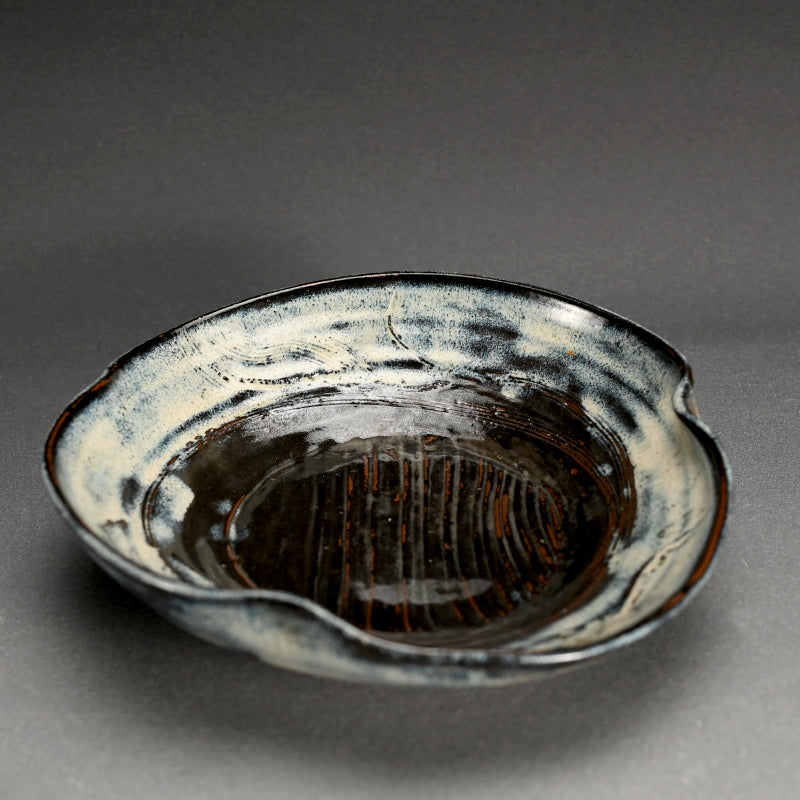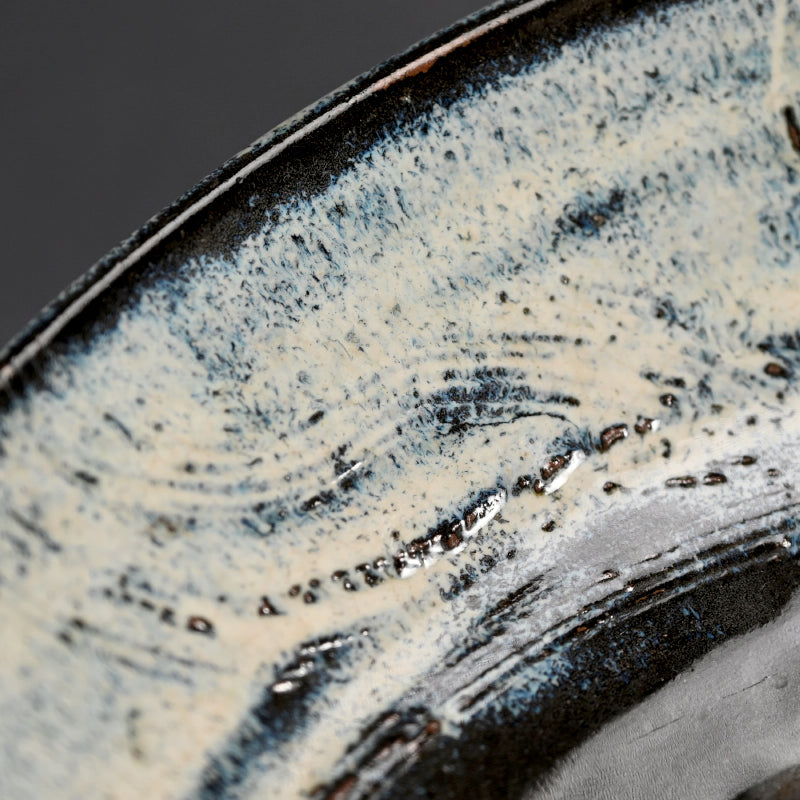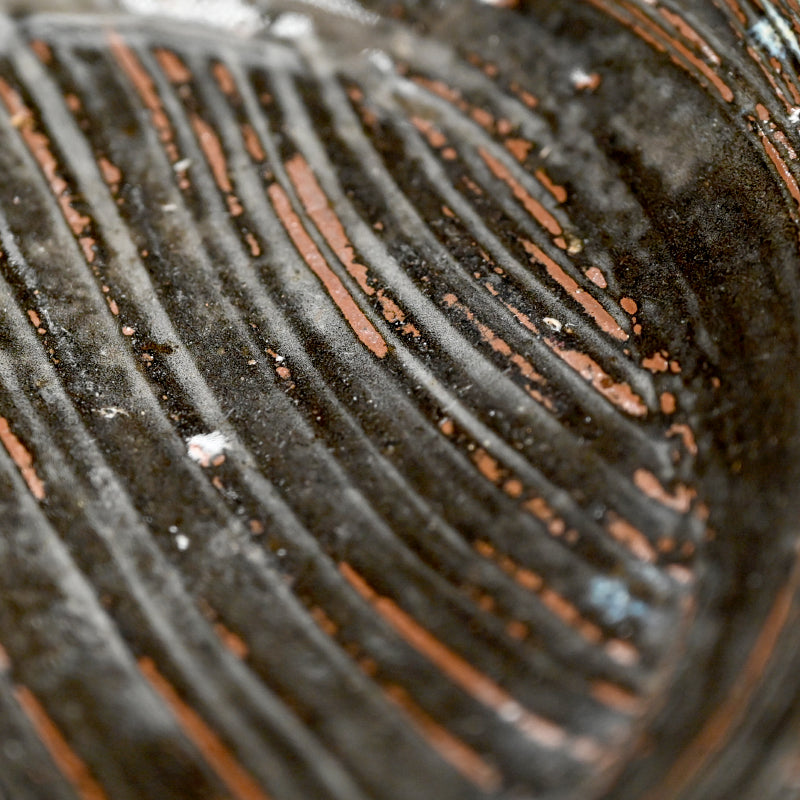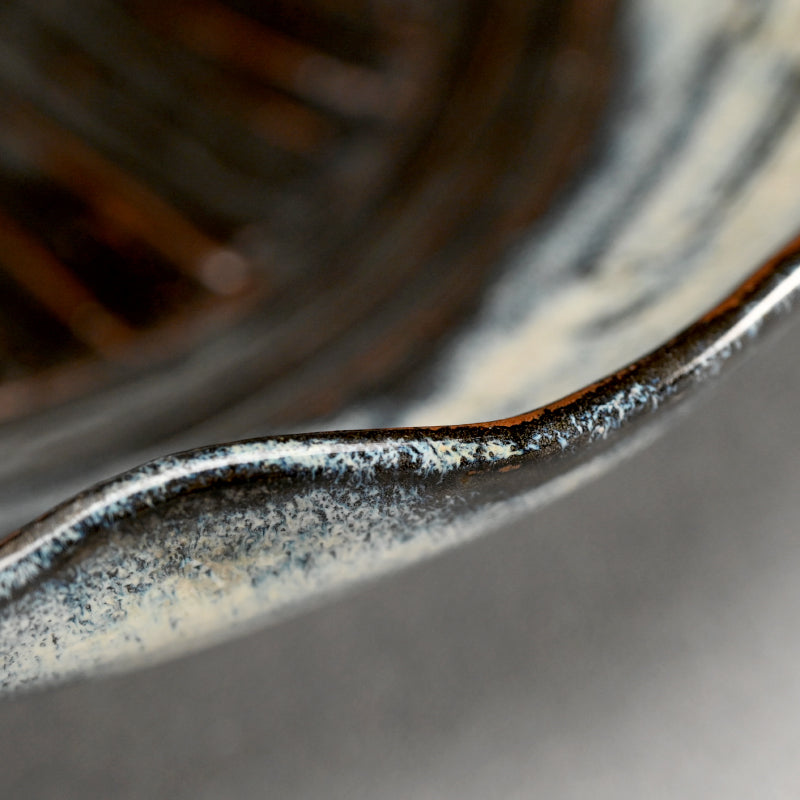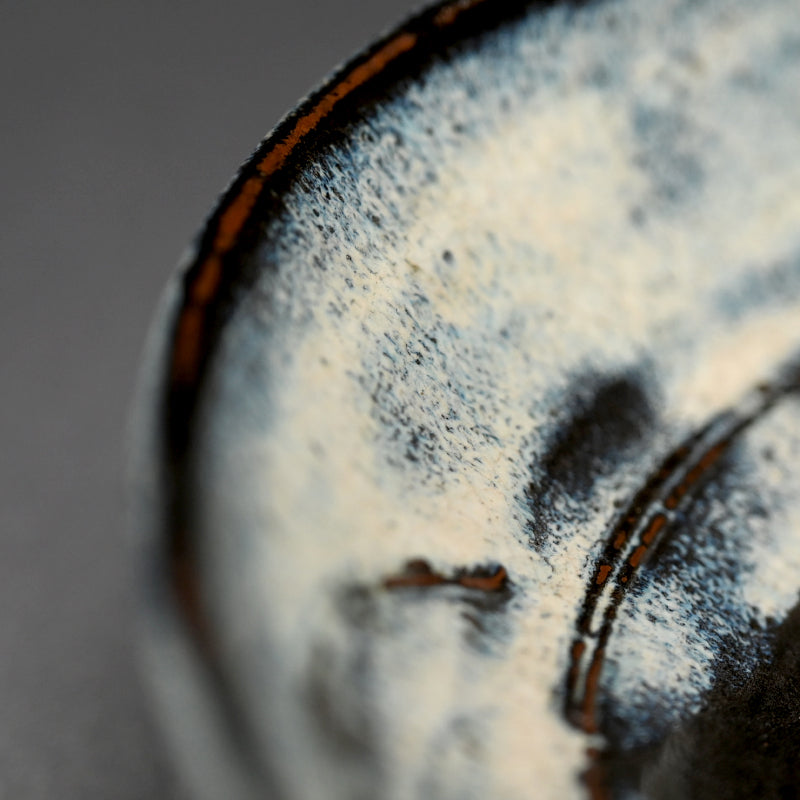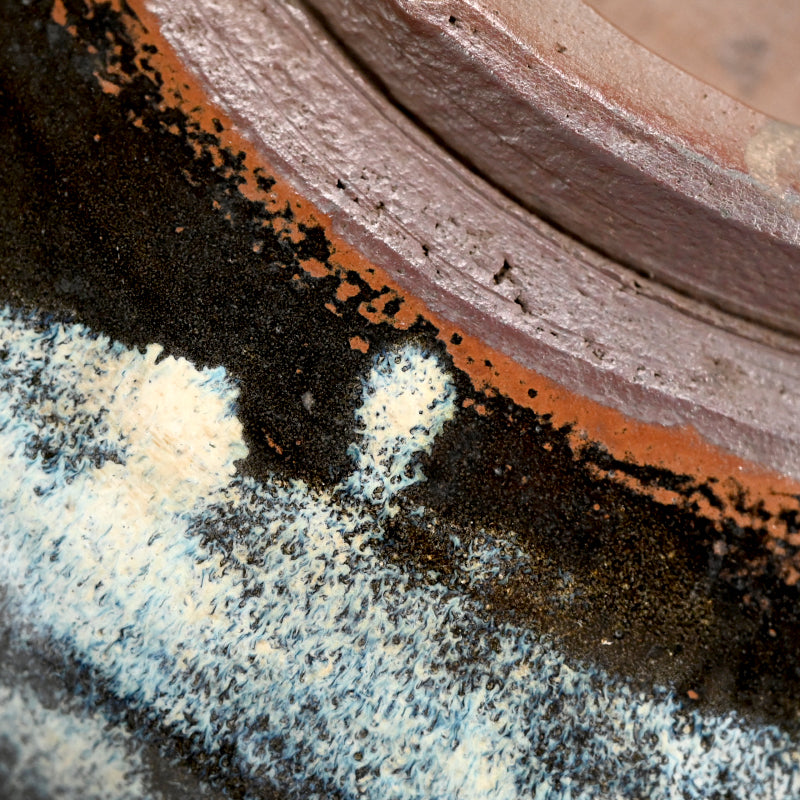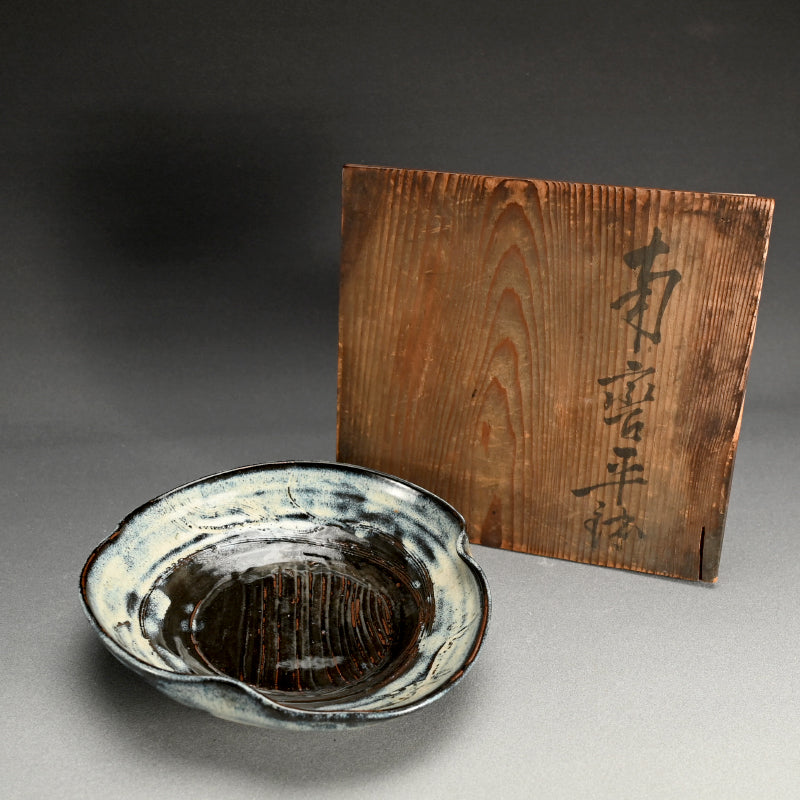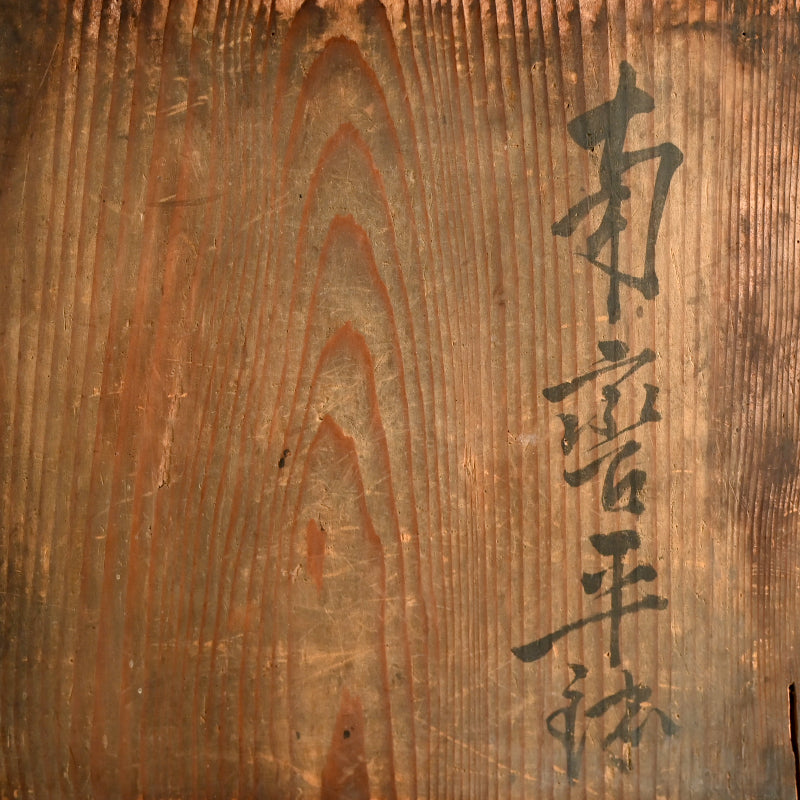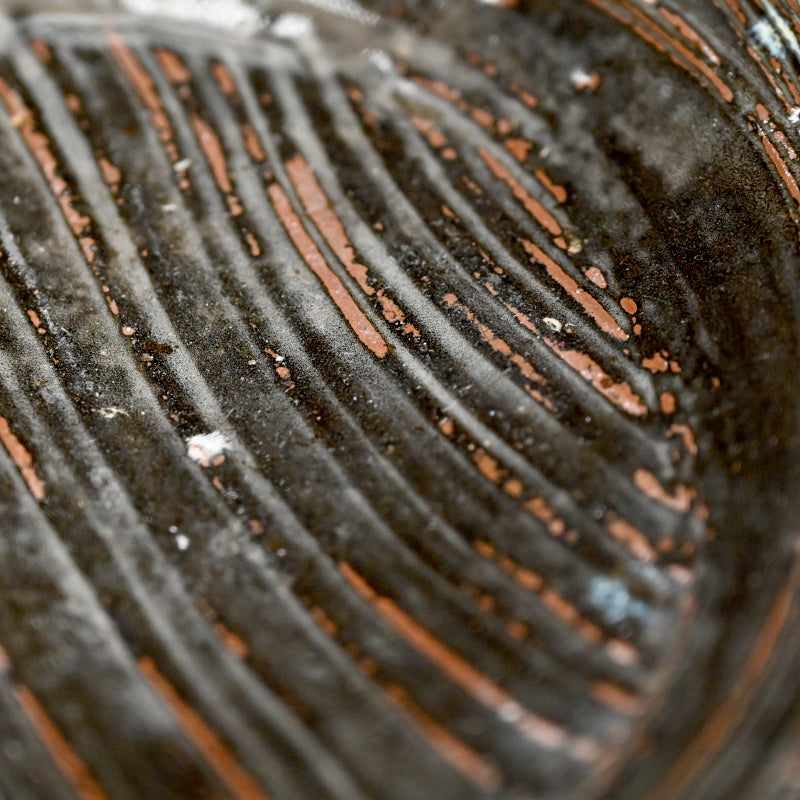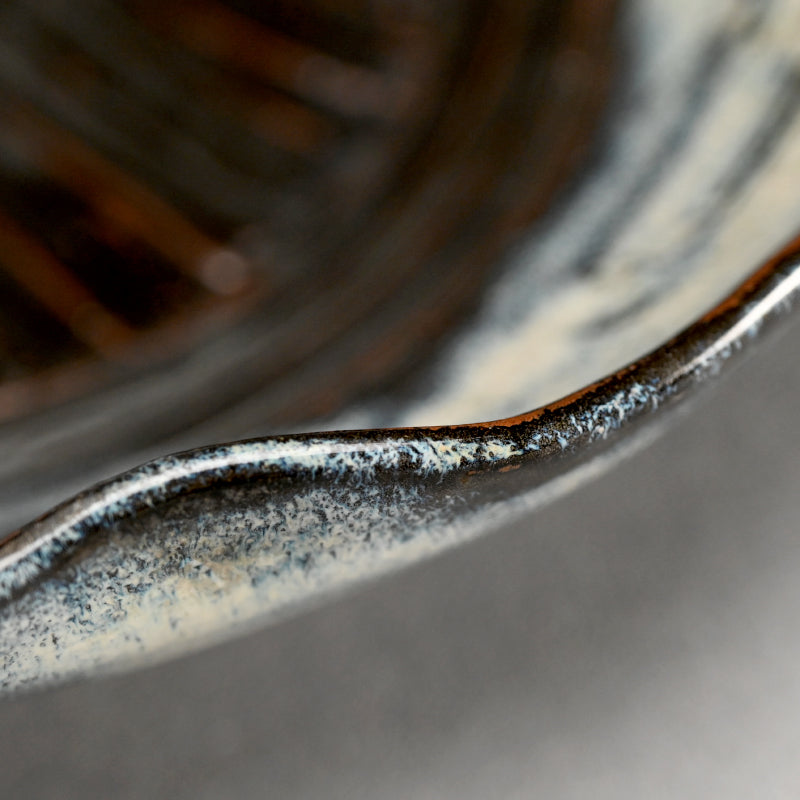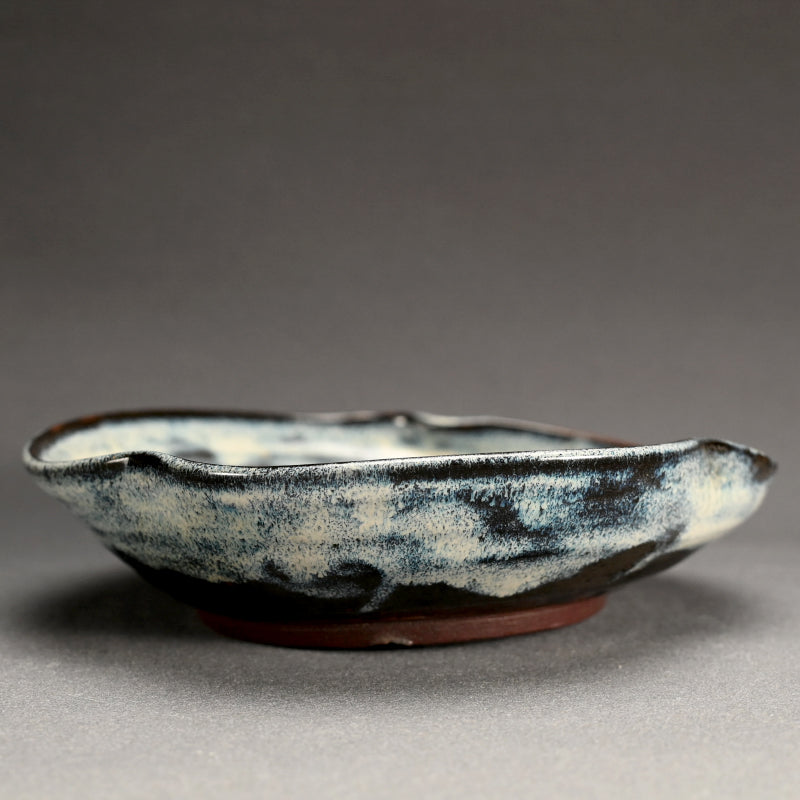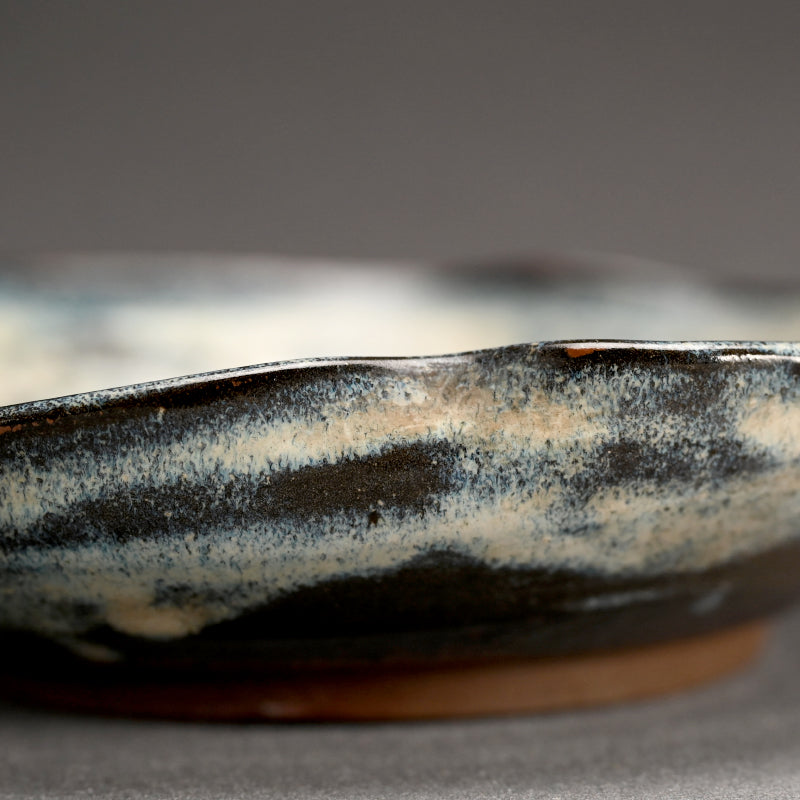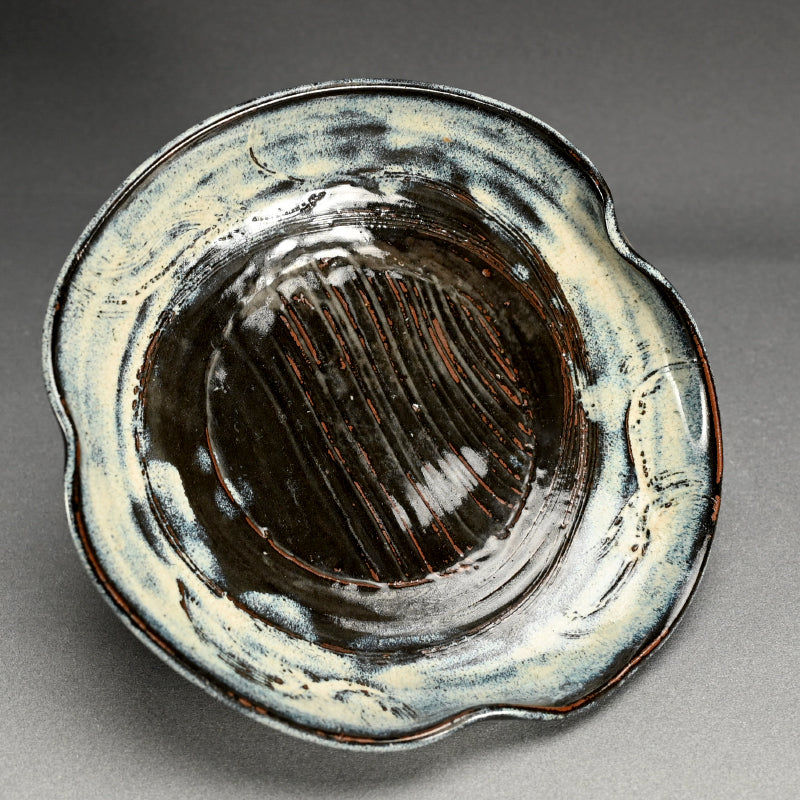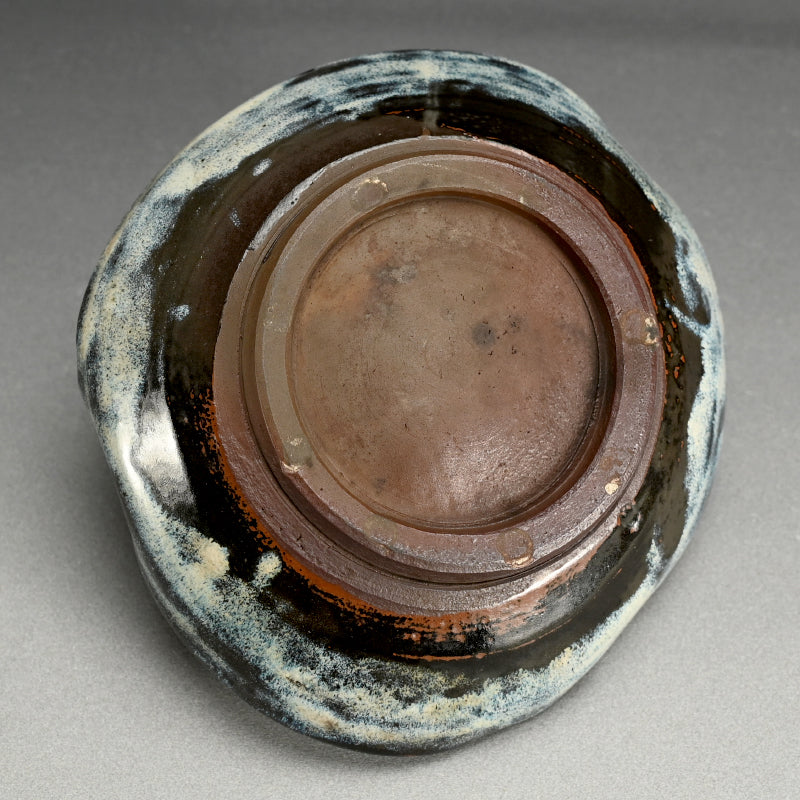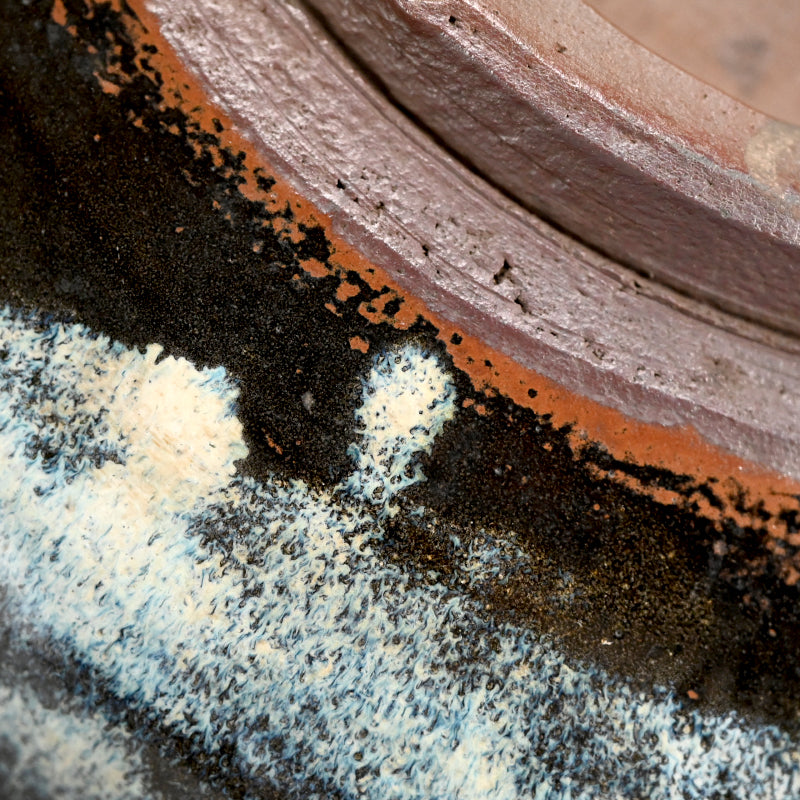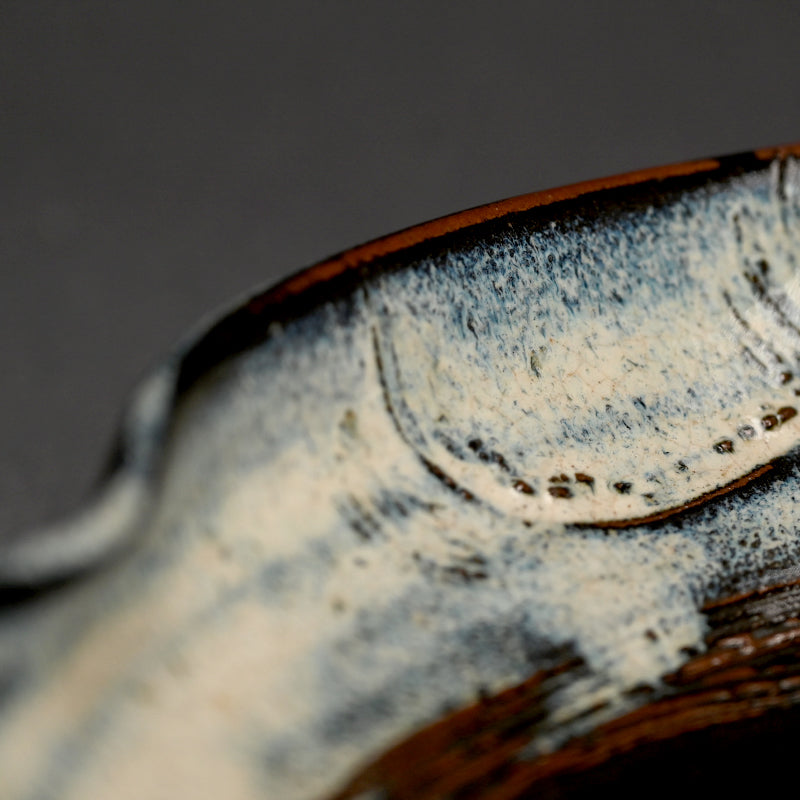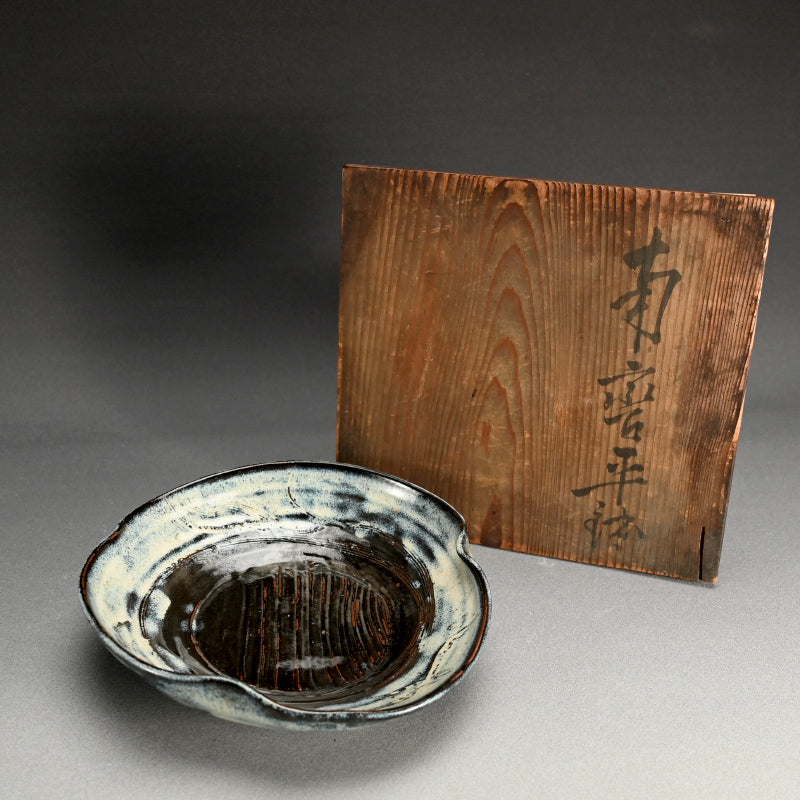Rare Antique Narushima Yaki Mingei Pottery Dish
Rare Antique Narushima Yaki Mingei Pottery Dish
Item Code: K614
Couldn't load pickup availability
A rare blue and sea foam glazed dish from the Narushima kilns of Yamagata prefecture enclosed in an age darkened wooden box dating from the 19th century (Edo to Meiji periods). Beneath the undulating rim comb marks have been etched into the iron rich clay creating a pattern of leaping waves. The smooth red, fine clay is visible clearly inside the foot-ring. The dish is 24.5 cm (10 inches) diameter, 6.5 cm (2-1/2 inches) tall and in excellent condition.
In the first year of Tenmei (1781), Uesugi Yōzan, lord of the Yonezawa Domain, established a kiln in Narushima as part of an industrial promotion initiative to support the domain's finances. Sagara Seizaemon, who was affiliated with the domain’s support system, studied Soma ware and passed on its techniques. The hallmark of Narushima ware is its "namako glaze," achieved by applying an iron glaze and then overlaying it with an ash glaze. The name "namako" (sea cucumber) derives from the marine creature, and the technique is believed to be an ancient method also associated with Karatsu ware from Saga Prefecture. Variants of this style are found in other regions, such as Aizu-Hongo ware in Fukushima and Naraoka ware in Akita, indicating its spread throughout the Tohoku region. Among these, Yonezawa's Narushima ware is notable for its strong bluish tones. The pottery primarily consisted of everyday household items like water jars, spouted bowls, flat dishes, and rice bowls, catering to the needs within the domain. The kiln operated until the late Meiji period.
Share
